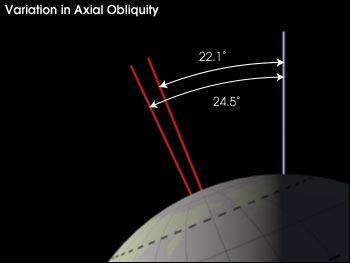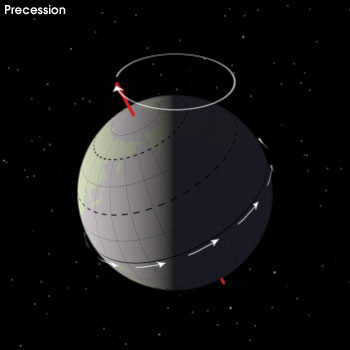The response of radiative feedbacks and equatorial Pacific seasonality to orbital forcing
By:
Michael Erb
UTIG

| When: | Friday, March 7, 2014, 10:30 a.m. to 11:30 a.m. Join us for coffee beginning at 10:00 a.m. |
| Where: | Seminar Conference Room, 10100 Burnet Road, Bldg 196-ROC, Austin, Texas 78758 |
| Host: | Charles Jackson, UTIG |
Click for a Live Broadcast.
Abstract
Past changes in the Earth's orbital properties led to dramatic changes in the Earth's climate. To investigate the effects of this orbital forcing on the climate system, idealized simulations are conducted with the GFDL CM2.1, an atmosphere-ocean general circulation model, in which obliquity, eccentricity, and longitude of the perihelion are altered while other forcings, such as ice sheets and atmospheric composition, are held at preindustrial levels.
Because only the Earth's orbit is changed in these simulations, the climate response to obliquity and precession may be isolated, and two aspects of the response are explored in particular: radiative feedbacks and changes in equatorial Pacific seasonality.
 While changes in obliquity and longitude of the perihelion simply redistribute insolation without altering its global, annual-mean value, radiative feedbacks - changes in surface albedo, water vapor, lapse rate, and clouds - can lead to significant global-mean temperature response: -0.5 K in a lowered obliquity experiment and +0.6 K
in an altered longitude of perihelion experiment. Additionally, in the Arctic, cloud feedbacks damp the reduction of summer insolation at times when orbital forcing should promote glaciation, perhaps presenting an additional hurdle for glaciation. In the equatorial Pacific, the seasonal temperature cycle responds strongly to precession. Part of this seasonality change is a direct thermodynamic response to changing insolation,
but some of the change may be attributed to changes in strength of the subtropical anticyclones and changes in convection over the western equatorial Pacific. Such changes in equatorial Pacific seasonality could be misinterpreted as ENSO variations in proxy records which lack sufficient time resolution.
While changes in obliquity and longitude of the perihelion simply redistribute insolation without altering its global, annual-mean value, radiative feedbacks - changes in surface albedo, water vapor, lapse rate, and clouds - can lead to significant global-mean temperature response: -0.5 K in a lowered obliquity experiment and +0.6 K
in an altered longitude of perihelion experiment. Additionally, in the Arctic, cloud feedbacks damp the reduction of summer insolation at times when orbital forcing should promote glaciation, perhaps presenting an additional hurdle for glaciation. In the equatorial Pacific, the seasonal temperature cycle responds strongly to precession. Part of this seasonality change is a direct thermodynamic response to changing insolation,
but some of the change may be attributed to changes in strength of the subtropical anticyclones and changes in convection over the western equatorial Pacific. Such changes in equatorial Pacific seasonality could be misinterpreted as ENSO variations in proxy records which lack sufficient time resolution.
Images are from Robert Simmon at NASA GSFC
http://earthobservatory.nasa.gov/Features/Milankovitch/milankovitch_2.php.




